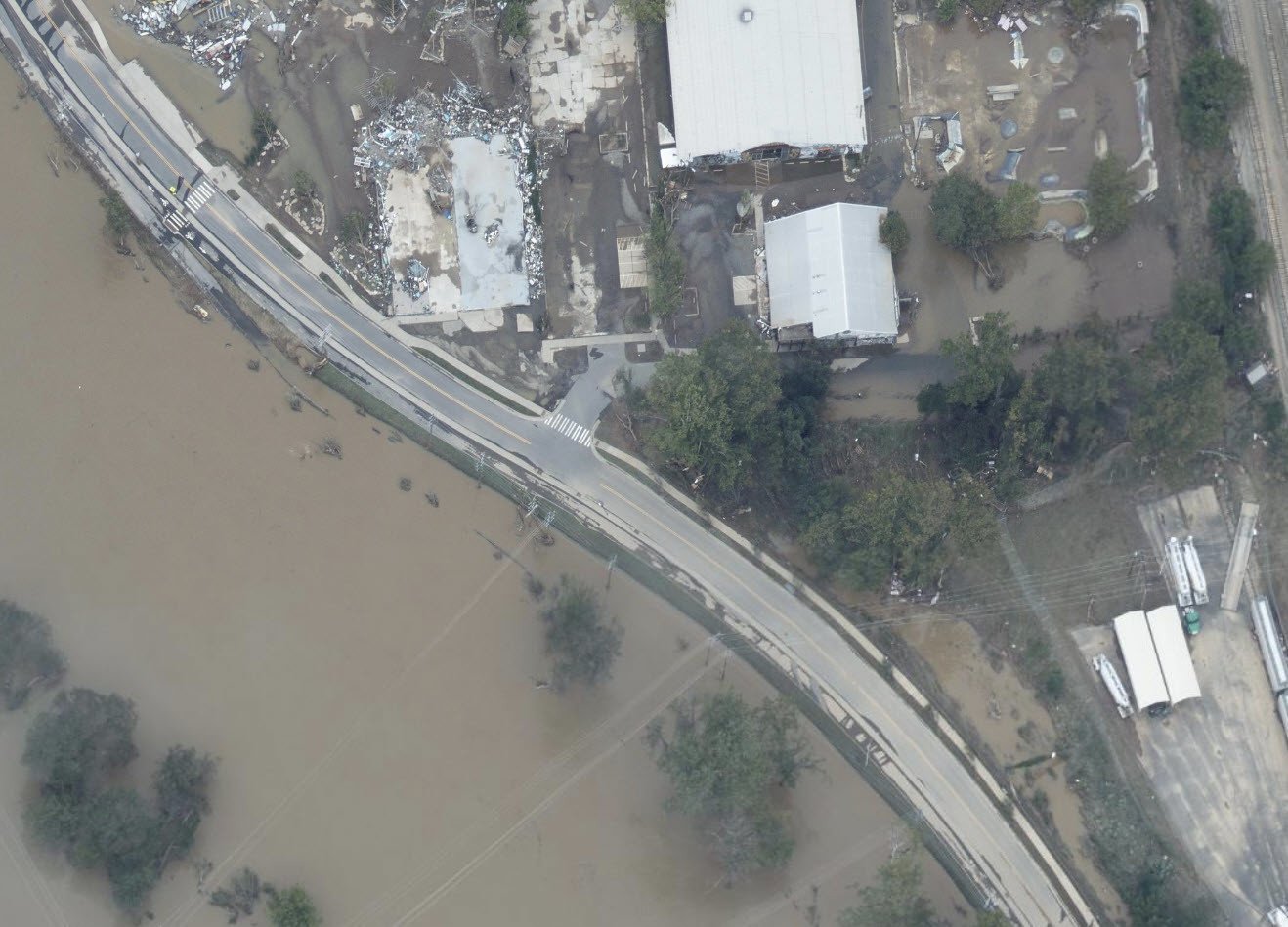Dispatches in Decarbonization: A Circular Economy Approach to Keeping Humanity Connected
This article first appeared in Mahesh Ramanujam’s monthly LinkedIn newsletter, Dispatches in Decarbonization, on November 14, 2024. Subscribe on LinkedIn to receive these updates.
Recently, while delivering remarks on the importance of decarbonizing data centers, I decided to talk about Asheville, North Carolina, and how it became ground zero for Hurricane Helene, one of the worst disasters in U.S. history.
You may be asking yourself: Why is Asheville relevant to an event about data centers? It’s because Asheville is home to one of NOAA National Ocean Service’s most prominent data centers, the National Centers for Environmental Information, which “maintains one of the most significant archives on Earth, with comprehensive oceanic, atmospheric, and geophysical data dating back to the 1700s.”
Yet, as of early October, according to NOAA, all archived data was no longer accessible and limited new data was able to be ingested. NOAA’s most consequential data center — the technological hub for tracking climate change and for preparing the necessary guidance and survival measures — stood as a beacon of safeguarding information, personnel, and the future of how to best navigate our changing environment and resources. And now it’s wiped out, out of commission, and a crisis-driven cautionary tale.
I wanted to tell this story to set the context for why decarbonizing data centers is so important.
The devastation caused by Hurricane Helene in Asheville. Source: NCDOTcommunications
It’s not a stretch to say that carbon emissions are one of the biggest threats to maintaining a connected world. This means that in decarbonizing the building sector at scale, we must place an immediate focus on transforming the integrity of our data centers.
A GROWING GLOBAL FOOTPRINT
Data centers are among the most energy-intensive buildings, consuming 10 to 50 times the energy per floor space compared to a typical office building. This is primarily due to the need for continuous operation and extensive cooling systems.
Thus far, sustainability in data center design has focused primarily on energy efficiency and virtualization. And while these are incredibly valuable steps, tackling a footprint expanding in seemingly every corner of the world will require a holistic, cost-effective, circular economy approach — one that is more accessible and designed to empower us to truly decarbonize data centers at scale.
EIGHT STEPS OF A CIRCULAR ECONOMY APPROACH
Circular economy practices aim to minimize waste and make the most of resources by reusing, repairing, refurbishing, and recycling materials. For a data center-specific decarbonization strategy, there are eight top line practices I recommend for implementation.
Repurpose waste heat. Data centers generate a significant amount of heat as a byproduct of their operations. Instead of dissipating this heat, it can be redirected to support local heating systems or agricultural projects. For example, in Northern Europe, some data centers use waste heat to warm nearby buildings or to maintain optimal temperatures in greenhouses. Another example is Meta's data center in Odense, Denmark — a facility that captures waste heat and supplies it to the local district heating system, which supports thousands of homes in the area.
Manage e-waste. Due to the rapid turnover of technology, electronic waste, or e-waste, has become a growing concern. Data centers must partner with specialized recycling firms to ensure that obsolete equipment is disposed of responsibly. This process recovers valuable materials and reduces environmental harm.
Refurbish and reuse equipment. Instead of discarding old servers and components, data centers should refurbish and reuse them. Google has been a pioneer here, refurbishing servers and other hardware to maximize their lifespan, and extending this behavior up and down the product line and value chain. The company partners with device manufacturers to help increase the number of new Chromebooks that are made with recycled materials and are easy to customize, repair, and upgrade.
Design for longevity and recyclability. A strong circular economy begins at the design stage. Data centers built with modular components allow for easy upgrades and replacements, and extend the overall lifespan of a facility. Designing for disassembly makes it simpler to recycle components at the end of their life cycle. Data centers are increasingly designing products that are easy to repair, refurbish, and recycle — and this must continue. Google, for example, works with the Ellen MacArthur Foundation on this front to implement circular economy principles across its data centers.
Conserve water. Data centers are exploring ways to utilize treated wastewater for cooling purposes. This reduces the strain on local water resources and contributes to broader conservation. In the Netherlands, Ireland, and Sweden, Microsoft is focused on water conservation — their data centers harvest rainwater to reduce reliance on freshwater sources. With a global water crisis, this practice will become more and more integral to functionality and resilience of these centers and the communities they are in.
Community engagement. By supporting local sustainability efforts, data centers can involve collaborators and become integrated community assets. This includes participating in renewable energy projects and engaging in community-driven environmental initiatives. Google organized a tour across Europe to educate local communities about their data center’s role in sustainability — including visits to Belgium, Denmark, Finland, Germany, and the Netherlands. During these tours, Google announced various projects aimed at supporting local communities and enhancing sustainability efforts.
Implement innovative cooling solutions to reduce energy consumption. Liquid cooling, for example, is more efficient than traditional air cooling and can significantly reduce energy use. Meta’s data center in Luleå, Sweden utilizes the naturally cool climate and geothermal cooling to maintain optimal temperatures, a method that significantly reduces the need for traditional cooling systems, leading to substantial energy savings.
Energy storage and management. Data centers are investing in energy storage solutions like batteries to ensure a steady supply of renewable energy. This helps balance the intermittent nature of renewable sources and supports a more sustainable energy infrastructure. Google is using Battery Energy Storage Systems in its data centers to store excess renewable energy and to reduce reliance on fossil fuels. They’re also using advanced energy management software to improve efficiency and real-time monitoring to adjust energy consumption based on demand.
THE BENEFITS
While the initial costs for adopting circular economy practices often require a significant investment — including money for new technologies, redesigning infrastructure, and training staff and personnel — what you can expect to see in the immediate and long-term is nothing short of extraordinary. This is particularly true when you look at the specific initiatives focused on lowering emissions that will accelerate the effectiveness of the overall approach:
There is a reduction of material costs. By refurbishing and reusing servers and other hardware, data centers can significantly cut down on the costs associated with purchasing new equipment.
It lowers energy bills. Implementing energy-efficient cooling systems and optimizing power usage can drastically reduce energy consumption, leading to lower energy bills. Also, while the initial setup for renewable energy sources can be expensive, they provide long-term cost benefits.
Storing renewable energy creates greater reliability. Large-scale battery systems can store excess renewable energy generated during peak production times and release it when production is low. This ensures a stable power supply.
Maintenance and operational costs will come down. Circular economy practices such as regular maintenance and refurbishment extend the lifespan of equipment. Advanced cooling technologies not only save energy but also reduce equipment wear and tear, ultimately lowering maintenance costs.
AI and machine learning can optimize operations. AI-driven energy management systems can optimize energy use and cooling, reducing overall consumption.
Adhering to environmental regulations through sustainable practices can help data centers avoid fines and penalties. Many governments offer incentives for adopting green technologies and practices. Tax breaks, grants, and subsidies encourage the adoption of renewable energy and energy-efficient technologies.
Resources for data center reporting are expanding. Carbon footprint calculators are helping data centers estimate their emissions based on energy consumption and resource usage. Companies publish detailed sustainability reports that include their carbon emissions, energy consumption, and progress towards net zero goals.
On the cost of waste management, the benefits are perhaps lesser known, but impactful. Effective e-waste management and recycling programs reduce the costs associated with disposing of obsolete equipment. And some data centers even generate revenue by selling recycled materials recovered from old equipment, while some transfer their waste heat to local district heating systems, providing heat to nearby buildings and communities.
And last but not least, the upfront investment here is directly tied to a company’s market and brand value. Being a leader in sustainability can provide a competitive edge, attracting clients who prioritize environmental responsibility.
This might feel overwhelming, but the reality is that many data centers are already accelerating the circular economy principles from all angles — proving that it is possible to make significant, incremental strides in overcoming decarbonization obstacles with innovation, collaboration, and investment.
The capacity is there. The resources are there. The opportunities are there. And the affordable entry points to start the process are there. With a focus on a circular economy approach, our decarbonization efforts can be transformed in ways we never thought possible.
But to safeguard that progress, to avoid the loss of data we have seen in Asheville and will see in centers facing the threat of climate change, a renewed commitment to protecting these centers will need to be made en masse.
I hope this is a future we can accelerate together — today.
Connect with the team at Global Network for Zero to learn how you can accelerate your path to net zero: https://www.globalnetworkforzero.com/becoming-a-partner



